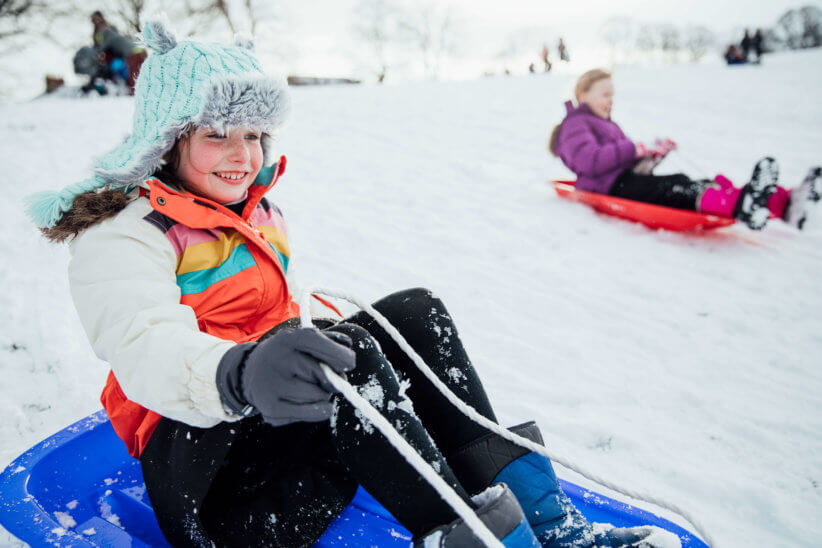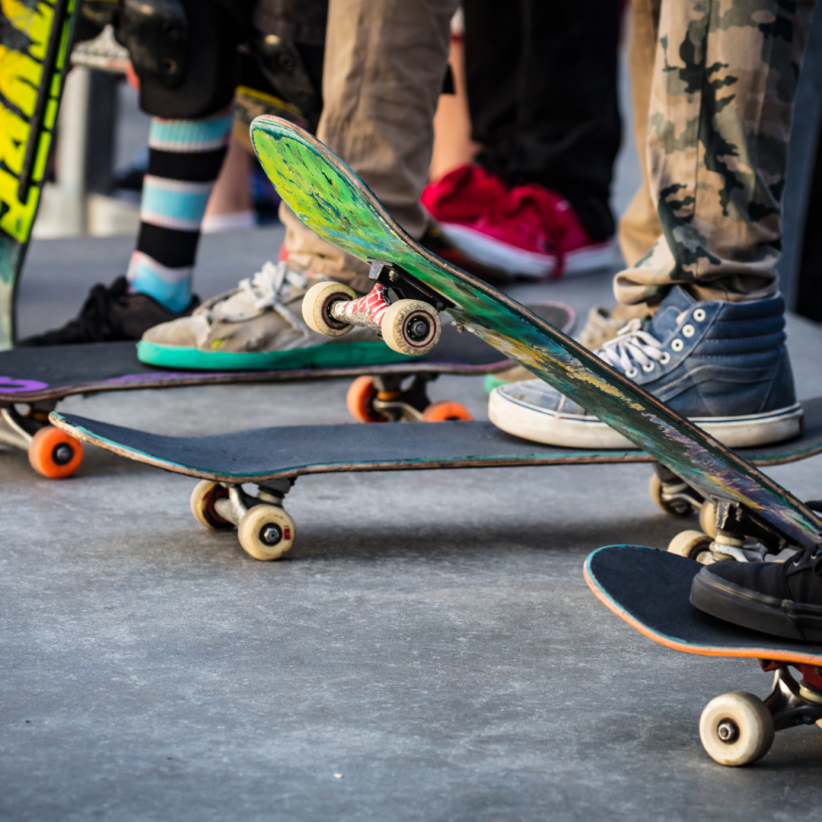
Sledding Safety Tips
For parents, if we have a snow-y winter it often means shoveling snow and waking up early to de-ice the windshield. For kids, the season brings more exciting prospects like snowball fights, ice skating and, of course, sledding. While these memory-making pastimes are an important right of passage – maybe now more than ever as kids tend to be glued to electronics – these winter activities do pose danger.
Many parents think sledding is safer than seemingly more extreme activities such as skiing, snowboarding or skating. As wonderful as sledding may be, there can be a risk of serious injury. Each year sledding accidents send more than 20,000 children to hospital emergency rooms around the country. Thankfully, Darshan Patel, M.D. Chief of Pediatric Emergency Medicine at Maria Fareri Children’s Hospital, has some simple, helpful tips for parents to help minimize injuries and maximize fun this winter.
Choosing a Hill
Not just any hill will do when it comes to finding a safe place to sled. The slope of the hill should even out at the end of the ride, so that the sled will begin to slow down and come to an easy stop before the child is in danger of hitting anything. This gives kids plenty of time and space to bring themselves to a halt. A sledding hill should be void of trees, ponds, rocks, fences, roads and parking lots. Parents are encouraged to pick out a safe area, even if that means driving kids to the park, and to use their judgment to determine if conditions are too icy.
Psst…check out where Where to Go Sledding in the NYC Area
Choosing a Sled
“We encourage people to buy sleds where the child can sit forward facing,” says Patel. “The sled should have the ability for the child to sit on it and steer.” Plastic toboggans, tubes or anything that can’t be steered make it easier for children to lose control and get turned around. Parents also want to make sure that kids never lay on their stomachs, since this makes it harder to steer and easier for children to hit their heads. Feet first is the rule!
What to Wear
There’s nothing worse than freezing fingers or wet feet, and inadequate clothing can lead to more than just discomfort. Frostbite is a real risk that can be prevented not only by wearing multiple layers, waterproof gloves, snow boots and a hat, but by taking a few hot chocolate breaks throughout the day. “It is important for children to come indoors for frequent breaks when parents should check the child’s clothing to make sure it’s not wet,” Patel says. “If clothing becomes wet, it’s colder and that’s when we start to see some of the injuries caused by frostbite.” Patel also suggests that while sledding, children under age 12 wear a well-fitting helmet to minimize the risk of head injury.
Recognizing Injuries
Cuts and scrapes can be obvious, and parents are encouraged to call 911 or bring their child to the emergency room if a contusion looks too big for an adhesive bandage. Some other common sledding injuries include fractures, head injuries and injuries to the spleen or liver. These can be the result of crashes where children hit their head or abdomen with excessive force. You might not see much more than a little bruising, so how do you know when to seek medical attention? “If parents think that there is a significant amount of injuries, they should call 911, especially if the child starts to vomit or has loss of consciousness or if you do see bleeding,” says Patel. Walking in to your local emergency department or contacting your pediatrician are also options if you aren’t quite sure.
Who Should Sled?
Children must absolutely have the ability to sit fully upright with their feet first and be able to steer the sled themselves. Children under age five might not be able to manage this task. Others might need close adult supervision, which doesn’t mean sitting on the sled with the child. Patel discourages co-sledding, because if a parent – or older sibling – loses control, it puts the child riding with them in danger.
Sledding is an enjoyable winter activity and with a bit of careful attention it can be a safe one, too.
Darshan Patel, M.D. is Chief of Pediatric Emergency Medicine at Maria Fareri Children’s Hospital, a member of the Westchester Medical Center Health Network and the children’s hospital for Westchester, the Hudson Valley and Fairfield County, Conn.
Rachel Wallace is a Westchester-based freelance writer.
This post original posted Nov 2015 , Updated Feb 2024.









